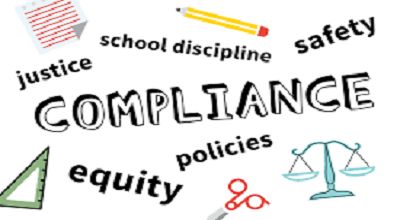Discipline in Education
Discipline in education refers to the practice of maintaining order and control. And a structured learning environment within schools, classrooms, and educational institutions. It involves a set of rules, expectations, and behaviors that students are expected to adhere to in order to create a conducive atmosphere for teaching and learning.
Discipline in education serves several important purposes:
- Behavior Management: Discipline helps manage student behavior, ensuring that students follow rules. And guidelines to maintain a safe and respectful learning environment. It helps prevent disruptions and distractions in the classroom.
- Learning Focus: A disciplined classroom provides students with the opportunity to concentrate on their studies without unnecessary interruptions. Allowing them to absorb and engage with the educational material effectively.
- Social and Emotional Development: Discipline can contribute to the development of students’ social and emotional skills. Such as self-control, responsibility, and respect for others. It helps students learn to manage their impulses and emotions.
- Teacher Authority: Discipline supports the authority of teachers and school administrators. When rules and consequences are consistently enforced. It reinforces the role of educators as leaders and guides in the educational process.
- Safety: Maintaining discipline is crucial for the safety of both students and staff. It helps prevent incidents of bullying, violence, and other unsafe behaviors.
More Read…
Discipline strategies can vary widely, ranging from positive reinforcement and rewards for good behavior to consequences and punishment for rule violations. The approach to discipline in education may also depend on the age of the students, the specific educational philosophy of the school, and the cultural norms and values of the community.
Effective discipline in education seeks to strike a balance between maintaining order and fostering a positive, respectful, and supportive learning environment. It should also take into account the individual needs and circumstances of students, recognizing. That one-size-fits-all approach may not be suitable for every student. Ultimately, the goal of discipline in education is to create an atmosphere in which students can learn, grow, and thrive academically and socially.
Benefits of Discipline in Education
Discipline in education offers several benefits for both students and the overall learning environment. Here are some of the key advantages:
- Promotes Learning: Discipline creates a structured and orderly classroom environment that allows students to focus on their studies. When distractions and disruptions are minimized, students are better able to absorb and retain information.
- Teaches Responsibility: The enforcement of rules and expectations teaches students about personal responsibility. They learn that their actions have consequences, which is an important life lesson.
- Develops Self-Control: Discipline helps students develop self-control and self-discipline. They learn to manage their impulses and emotions, which are valuable skills both in and outside of the classroom.
- Respect for Others: Discipline fosters an atmosphere of respect for teachers, peers, and the learning process itself. Students learn to respect the rights and needs of others, promoting a positive social environment.
- Safety: Maintaining discipline in schools contributes to the safety of students and staff. It helps prevent incidents of bullying, violence, and other harmful behaviors.
- Preparation for the Real World: Discipline prepares students for the expectations and standards they will encounter in the professional world. In the workplace, individuals are expected to follow rules and meet responsibilities.
Extra Benefits…
- Consistency: Discipline provides consistency in the learning environment, helping students understand what is expected of them. This predictability can reduce anxiety and uncertainty.
- Improved Classroom Management: Teachers can more effectively manage their classrooms when there is a clear system of discipline in place. This, in turn, can lead to better teaching and learning outcomes.
- Positive Behavior Reinforcement: Many discipline strategies incorporate positive reinforcement for good behavior. This encourages students to behave well and can boost their self-esteem and motivation.
- Social and Emotional Development: Discipline can contribute to the development of students’ social and emotional skills, such as empathy, cooperation, and conflict resolution.
- Parental Involvement: Discipline often involves communication with parents or guardians. Fostering a partnership between educators and families in supporting the child’s development.
- Character Building: Through discipline, students can learn valuable character traits such as integrity, perseverance, and resilience.
Summary
It’s important to note that the effectiveness of discipline strategies can vary based on the individual needs of students. Ideally, discipline should be fair, consistent, and balanced to ensure that it achieves its intended benefits without being overly punitive. Additionally, educators and administrators should continuously evaluate. And adapt their discipline practices to meet the evolving needs of students. And to create a positive and inclusive learning environment.
